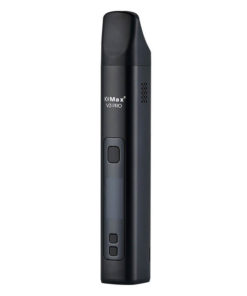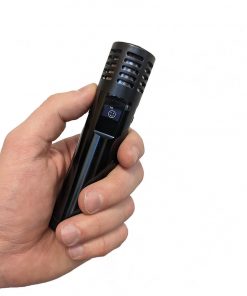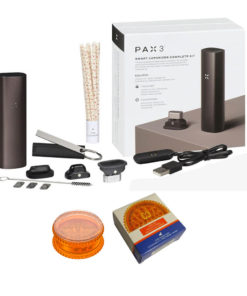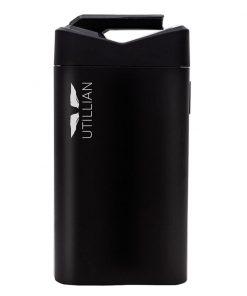Tips & Tricks
Convection vs Conduction: Understanding the Heating Process in Dry Herb Vaporizers
I. Introduction
A. Definition of Convection and Conduction
B. Purpose of Dry Herb Vaporizer
C. Importance of Understanding Heating Processes
II. Convection
A. Explanation of Convection Heating
B. Benefits of Convection Heating
C. Best Practices for Using a Convection Vaporizer
III. Conduction
A. Explanation of Conduction Heating
B. Benefits of Conduction Heating
C. Best Practices for Using a Conduction Vaporizer
IV. Comparison of Convection and Conduction
A. Pros and Cons of Convection
B. Pros and Cons of Conduction
C. Factors to Consider When Choosing a Vaporizer
V. Conclusion
A. Summary of Key Points
B. Recommendations for Choosing a Vaporizer
C. Final Thoughts
Notes:
Emphasize the importance of vaporizing temperature and its impact on the heating process and vapor quality
Use real-life examples to illustrate the benefits and drawbacks of each heating process
Highlight the factors that influence a person’s choice of a vaporizer, such as heat-up time, vapor quality, and cost.
I. Introduction
- Definition of Convection and Conduction: Convection heating refers to the process of heating a substance through the movement of a heated fluid, such as air or water. Conduction heating, on the other hand, occurs when heat is transferred from one object to another through direct contact.
- Purpose of Dry Herb Vaporizer: A dry herb vaporizer is a device used to heat cannabis or other herbs to a temperature that releases active ingredients in the form of vapor. The purpose of a vaporizer is to avoid the harmful byproducts that result from smoking.
- Importance of Understanding Heating Processes: The heating process used in a dry herb vaporizer has a significant impact on the quality of the vapor produced. Understanding the difference between convection and conduction heating can help you choose the right vaporizer for your needs.
II. Convection
- Explanation of Convection Heating: In a convection vaporizer, heat is transferred to the herb through the movement of hot air. This ensures that the herb is heated evenly and consistently, resulting in a more flavorful and efficient vaporization experience.
- Benefits of Convection Heating: The benefits of convection heating include better flavor, more efficient use of herbs, and less waste. Best Practices for Using a Convection Vaporizer: To get the most out of your convection vaporizer, it’s important to grind your herb finely, pack the chamber loosely, and start with a low temperature before gradually increasing it. You may also want to stir the herbs occasionally to ensure even heating.
III. Conduction
- Explanation of Conduction Heating: In a conduction vaporizer, heat is transferred from the heating element to the herb through direct contact. This can result in uneven heating and a less efficient vaporization experience.
- Benefits of Conduction Heating: The benefits of conduction heating include faster heat-up times and lower costs.
- Best Practices for Using a Conduction Vaporizer: To get the most out of your conduction vaporizer, it’s important to grind your herb finely, pack the chamber tightly, and start with a low temperature before gradually increasing it. You may also want to stir the herbs occasionally to ensure even heating.
IV. Comparison of Convection and Conduction
- Pros and Cons of Convection: The pros of convection heating include better flavor, more efficient use of herbs, and less waste. The cons of convection heating include longer heat-up times and higher costs.
- Pros and Cons of Conduction: The pros of conduction heating include faster heat-up times and lower costs. The cons of conduction heating include uneven heating and a less efficient vaporization experience.
- Factors to Consider When Choosing a Vaporizer: When choosing a vaporizer, it’s important to consider your personal preferences, such as vapor quality, heat-up time, and cost. You may also want to consider the size and portability of the vaporizer.
V. Conclusion
- Summary of Key Points: The heating process used in a dry herb vaporizer has a significant impact on the quality of the vapor produced. Convection heating offers better flavor and more efficient use of herbs, while conduction heating offers faster heat-up times and lower costs.
- Recommendations for Choosing a Vaporizer: If you prioritize vapor quality and efficiency, a convection vaporizer may be the right choice for you. If you prioritize heat-up time and cost, a conduction vaporizer may be a better option.
- Final Thoughts: Understanding the difference between convection and conduction heating is crucial for choosing the right dry herb vaporizer for your needs. Regardless of which heating process you choose, it’s important to use your vaporizer responsibly and follow best practices for maximum benefits.
Here is an example of some great conduction and convection dry herb portable vaporizers:
Portable Vaporizer
Portable Vaporizer
Portable Vaporizer
Portable Vaporizer
- Quality of S&B Volcano Bags - May 9, 2024
- Arizer Ascends: Why I Abandoned Tiny Might and Firefly 2 - May 8, 2024
- Why I switched to a Concentrate Vaporizer in 2024! - May 8, 2024





